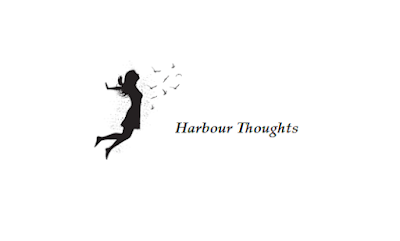In November
To J. A. R.
By Duncan Campbell Scott
The ruddy sunset lies
Banked along the west;
In flocks with sweep and rise
The birds are going to rest.
The air clings and cools,
And the reeds look cold,
Standing above the pools,
Like rods of beaten gold.
The flaunting golden-rod
Has lost her worldly mood,
She’s given herself to God,
And taken a nun’s hood.
The wild and wanton horde,
That kept the summer revel,
Have taken the serge and cord,
And given the slip to the Devil.
The winter’s loose somewhere,
Gathering snow for a fight;
From the feel of the air
I think it will freeze to-night.
Poem Analysis:
Duncan Campbell Scott’s poem “In November” captures the seasonal transition from autumn to winter, painting a vivid picture of nature’s final moments before the cold sets in. Through a series of striking images and personifications, Scott portrays November as a month of retreat, transformation, and quiet preparation for the challenges of winter. While the tone is reflective, there is also an underlying sense of vitality and movement, as if nature is taking on a new, solemn purpose after the exuberance of summer.
Structure and Form
The poem consists of five quatrains, each with a clear and rhythmic structure. The consistent use of alternating rhyme (ABAB) gives the poem a musical flow, resembling a lyrical farewell to autumn. Scott employs a straightforward narrative progression: from the visual beauty of the sunset and departing birds to the symbolic renunciation of summer’s “worldly mood,” and finally to the impending arrival of winter.
Imagery and Symbolism
1. The Sunset and Birds
The opening stanza sets the scene with an image of closure and stillness:
“The ruddy sunset liesBanked along the west;In flocks with sweep and riseThe birds are going to rest.”
The “ruddy sunset” suggests both warmth and finality, as if the day—and by extension, the season—is being laid to rest. The birds’ movements emphasize the natural rhythm of migration and the instinctive preparation for harsher days ahead.
2. Coldness and Gold
In the second stanza, Scott introduces tactile imagery:
“The air clings and cools,And the reeds look cold,Standing above the pools,Like rods of beaten gold.”
The reeds, described as “rods of beaten gold,” highlight the fading remnants of summer’s beauty. Gold here symbolizes both richness and decline, as it often does in autumnal imagery.
3. Religious Imagery and Personification
The third and fourth stanzas feature personification and religious symbolism:
“The flaunting golden-rodHas lost her worldly mood,She’s given herself to God,And taken a nun’s hood.”
The golden-rod, a plant often associated with late summer and early autumn, is portrayed as a worldly figure renouncing her flamboyance and adopting a religious habit (“a nun’s hood”). The following stanza expands this idea:
“The wild and wanton horde,That kept the summer revel,Have taken the serge and cord,And given the slip to the Devil.”
Here, the summer flowers and plants—once described as joyful and “wanton”—are now likened to penitents who have abandoned their indulgences for a monastic life. This transformation mirrors the natural cycle: the playful energy of summer gives way to the solemnity of late autumn.
4. Winter’s Approach
The final stanza shifts to a foreboding tone:
“The winter’s loose somewhere,Gathering snow for a fight;From the feel of the airI think it will freeze to-night.”
Winter is personified as a force preparing for battle, “gathering snow for a fight.” The speaker’s observation of the cooling air underscores the inevitable change of seasons.
Themes
- The Cycle of Seasons: The poem reflects on the natural progression from the vibrancy of summer to the quiet austerity of late autumn and the approach of winter.
- Transformation and Renunciation: Through religious and moral imagery, Scott suggests that nature undergoes a kind of spiritual transformation—abandoning the “wanton revel” of summer for a more solemn, reflective state.
- The Interplay of Beauty and Decay: The fading beauty of autumn is not mourned but rather seen as part of a dignified, almost sacred transition.
- Preparation for Hardship Both the birds going to rest and the imagery of winter preparing for “a fight” imply that all living things must prepare for challenges ahead.
Tone and Style
The tone of the poem moves from quiet reflection in the early stanzas to a more dramatic and anticipatory mood by the end. Scott’s use of personification (plants and seasons behaving like humans) adds warmth and character to the natural world, making the seasonal changes feel intimate and almost spiritual.
The language is rich yet simple, with concrete images such as “rods of beaten gold” and “ruddy sunset” paired with metaphorical and symbolic layers. This balance of the literal and figurative creates a vivid yet philosophical meditation on November’s atmosphere.
In “In November,” Duncan Campbell Scott captures the essence of late autumn as a moment of transition, humility, and preparation. Through imagery that blends natural description with religious symbolism and personification, the poem elevates November’s quiet landscapes into a scene of spiritual reflection. Winter’s approach, though framed as a looming challenge, is accepted as part of nature’s grand cycle—an inevitable and even noble passage from one phase of life to the next.
